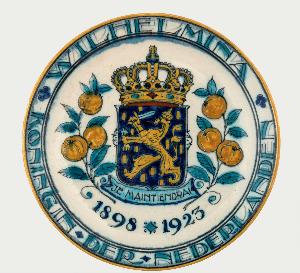Adolf Le Comte
Adolf Le Comte
Place: Amsterdam
Born: 1822
Death: 1884
Biography:
A Pioneer in Dutch Art Pottery
Adolf Le Comte, a Dutch artist born in Amsterdam in 1822, left an indelible mark on the world of art pottery. His work, characterized by artistic aspirations and produced in relatively small quantities between 1870 and 1930, was part of the Arts and Crafts movement. This movement was a reaction to the technically superb but over-ornamented wares made by large European factories, especially in porcelain.
Artistic Contributions
* **Innovative Ceramics**: Le Comte's art pottery represented the ceramic arm of the Aesthetic Movement and Art Nouveau. His work often featured earthenware or stoneware, with an interest in East Asian ceramics. * **Notable Works**: One of his most significant works is the Dutch Delft Wilhelmina Jubilee Plate, created in 1850, showcasing his mastery over ceramic art.
Artistic Movement and Influences
* **Arts and Crafts Movement**: Le Comte's work was part of this movement, which emphasized the value of the decorative arts. * **Aesthetic Movement and Art Nouveau**: His ceramics reflected the influence of these movements, characterized by a focus on aesthetic appeal and innovative design.
Legacy and Availability of Work
* **Wikioo.org**: View Le Comte's work, including his notable Dutch Delft Wilhelmina Jubilee Plate, at [https://Wikioo.org/@/Adolf-Le-Comte](https://Wikioo.org/@/Adolf-Le-Comte). * **Museum Collections**: While specific museum collections are not listed here, many of Le Comte's works can be found in Dutch museums and art institutions, reflecting his significant contribution to Dutch ceramic art.
- **Key Dates**: 1822: Born in Amsterdam 1884: Passed away 1850: Created the Dutch Delft Wilhelmina Jubilee Plate
- **Artistic Movement**: Arts and Crafts, Aesthetic Movement, Art Nouveau
- **Notable Works**: Dutch Delft Wilhelmina Jubilee Plate
- **Influences**: East Asian ceramics, European porcelain factories
Conclusion
Adolf Le Comte's legacy in art pottery is a testament to his innovative spirit and artistic vision. His work, characterized by its aesthetic appeal and technical skill, continues to inspire artists and art enthusiasts alike. Explore more of Le Comte's works at [https://Wikioo.org/@/Adolf-Le-Comte](https://Wikioo.org/@/Adolf-Le-Comte) and delve into the world of Dutch ceramic art.



